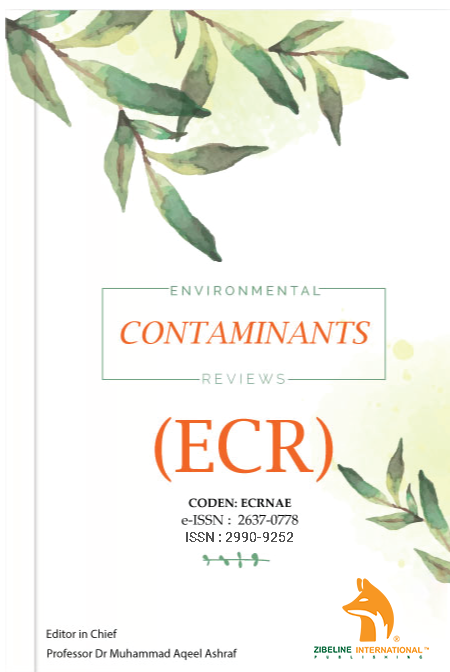
ASSESSMENT OF WASH SCENARIO AND ASSOCIATED HEALTH RISKS IN ROHINGYA REFUGEES IN BANGLADESH
Journal: Environmental Contaminants Reviews (ECR)
Author: Miraz Hossen, Md. Touhiduzzaman, Irteja Hasan, Md. Nazrul Islam
This is an open access article distributed under the Creative Commons Attribution License CC BY 4.0, which permits unrestricted use, distribution, and reproduction in any medium, provided the original work is properly cited
Doi:10.26480/ecr.02.2025.90.99
ABSTRACT
The Rohingya of Myanmar is one of the most persecuted minorities in the world, and one of the largest groups of stateless people around the world. The purposes of the present study were to explore the present status of water, sanitation, and hygiene, and to find out the risk of health hazards in the study area. A cross-sectional study was conducted between December to June 2023 in the largest Rohingya camp of south-eastern district in Cox’s Bazar of Bangladesh. A total of 160 Rohingya people were purposively selected for data collection. A semi-structured questionnaire was applied for the collection of quantitative information and the qualitative data was collected through Focus Group Discussion (FGDs) and Key Informant Interview (KII). The finding of the study revealed that 83.1% of the Rohingya people are illiterate and a few (8.1%) had education up to middle level. On the other hand, 84.4% of them had no income sources and completely depended on the assistance. The study showed that 80.6% of the people depend on tube-well water for drinking and non-drinking purposes. About 83% of the people have faced problem during the water collection period. The Studies revealed that more than half of the refugees whose age at least 5 or over had used communal latrines for defecation, in contrast, 60% of the children age under 5 had used open defecation. The Results also exposed that 56% of the people had used the designated site for household waste disposal. For hygiene practices, more than 46% of the people were facing problem of bathing due to unsafe condition. Besides this, only 44% of the respondents practices hand-washing where only 33% of the child were practiced hand-washing system. Results showed that due to inadequate clean water (91.3%) and latrine facilities (86.9%), lack of health awareness, unsafe environment (68.8%), congested living condition (80.6%), and lack of medical facilities is the major risk of health hazard.
KEYWORDS
Rohingya, Health Risk, Refugee, WASH, Bangladesh.

